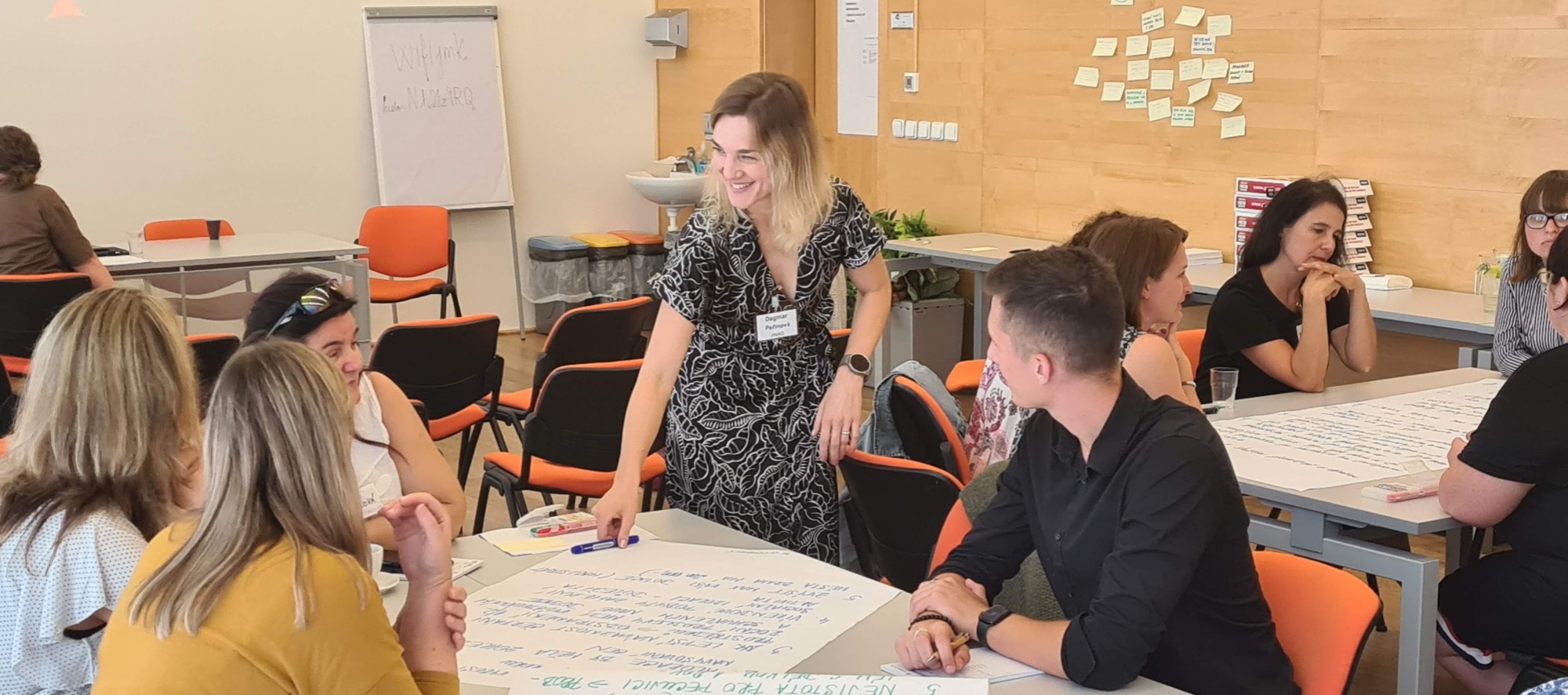
12. 01. 2024
Author: Jan Blažek
Participation, the third sector and why it is important
Since even here at JINAG, the areas of participation and the third sector are often overshadowed by other, more explicit and seemingly more pressing issues, we decided to correct this a little with this post.
Participation, or involvement, is a process that allows the public to take an active role in making decisions that directly affect their community. Why? Because who else is more expert on life in a given community? Who else knows why he or she enjoys walking around the local square or why he or she doesn't want to go to the local playground with the kids? It is important for us at JINAG to bring this mechanism to the towns and villages of the South Moravian Region. In them, the so-called third sector is often the driving force that ignites and drives change from below. This includes organisations and institutions that belong neither to the state sphere (first sector) nor to the private business sector (second sector). The third sector thus includes various non-profit and non-governmental organisations, foundations, charities, educational institutions or even active individuals among citizens.
Linking the third sector with local governments is essential for the effective functioning of both parties and can ultimately benefit the whole region. "In this participatory setting, local governments usually work with third sector organisations to address social, environmental, cultural or educational issues directly, locally. And often where the region cannot oversee well enough from its level; it fills a vacuum. The third sector brings innovative approaches, specific local know-how and, most importantly, proximity to the target groups," says Dagmar Peřinová, our participation specialist.
Cooperation with local governments, which provide institutional support, funding and legislative framework, takes place in the form of partnerships, grants, service contracts, participatory budgeting or through participatory planning processes. "A good example in this area is the participatory budgeting project Vylepši si školu (Improve Your School), which we are currently piloting in six selected secondary schools in South Moravia," Dagmar adds another practical observation.
Participation is magical in how varied and multi-layered it is, and unsurprisingly, Scandinavia is the furthest along in these techniques. "At the end of December, I represented JINAG at a discussion meeting of Czech and Norwegian cities. Even though we have a lot to boast about, what can we do - they are a bit further north," laughs Dagmar. In Norway, for example, micro-community centres operate within town halls. "Imagine it as a café with a reception desk, where there is a trained receptionist to help citizens with their requests. This way, people don't have to sit in impersonal waiting rooms for every enquiry and then sit behind clerks with order slips. Everything is done efficiently, in a friendly and pleasant environment."
If participation disappears from the daily rhythm, this has a number of negative consequences. "Without active public participation and third sector involvement, local government decisions can be divorced from the real needs and wishes of citizens. This can lead to inefficient use of public resources, reduced trust in public institutions and ultimately a weakening of democracy," concludes our specialist.
JINAG will introduce the topic of participation to a wider professional public at the Third Sector Day 2024. The first event of this kind in the South Moravian Region will be organised by our agency this February.